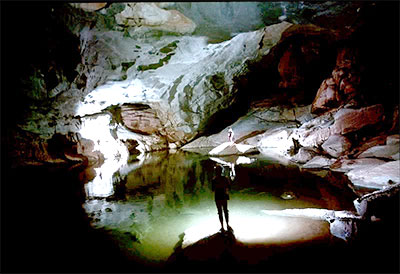(TITC) – On September 23, 2014, the Ministry of Culture, Sports and Tourism released a Decision recognizing three scenic sites in Ha Giang Karst Plateau (Ha Giang Province) as national relics, including the Hue Bien (Crinoidea) fossil area, Rong (Dragon) Cave and Na Luong Cave.
 |
|
Crinoidea |
The Crinoidea belongs to the family of echinoderms which used to live in deep sea. There are some 600 living Crinoidea species in the world. The Crinoidea fossils discovered in Lung Pu Commune, Meo Vac District (on the road from Meo Vac to Khau Vai) is much bigger in size and more densely-distributed than any other Crinoidea fossil areas in Dong Van Karst Plateau Geopark.
 |
|
Dragon Cave |
Located in Ta Lung and Pa Vi Communes, Meo Vac District, Dragon Cave is known as one of the largest and most unique caves in Dong Van Karst Plateau Geopark with the height of about 30 meters in some chambers, wide and flat ground and many splendid stalactites in different shapes.
 |
|
Na Luong Cave |
Na Luong Cave stretches over the area of Mau Long Commune, Yen Minh District and Sung Trai Commune, Dong Van District, being another beautiful cave in Ha Giang. The cave boasts a lot of beautiful stalactites with various strange shapes of fish, buffalo...
Being a moutainous province in the North of Viet Nam, Ha Giang is endowed with diverse terrain with many high rocky mountains, rivers and streams and unique culture of ethnic minorities such as H'mong, Tay, Dao, Nung. Thanks to the recognition of the three national relics, it is expected that Ha Giang would benefit from increased tourist flow to the area to discover the imposing scenery and peaceful life of the ethnic locals.
Thu Thuy